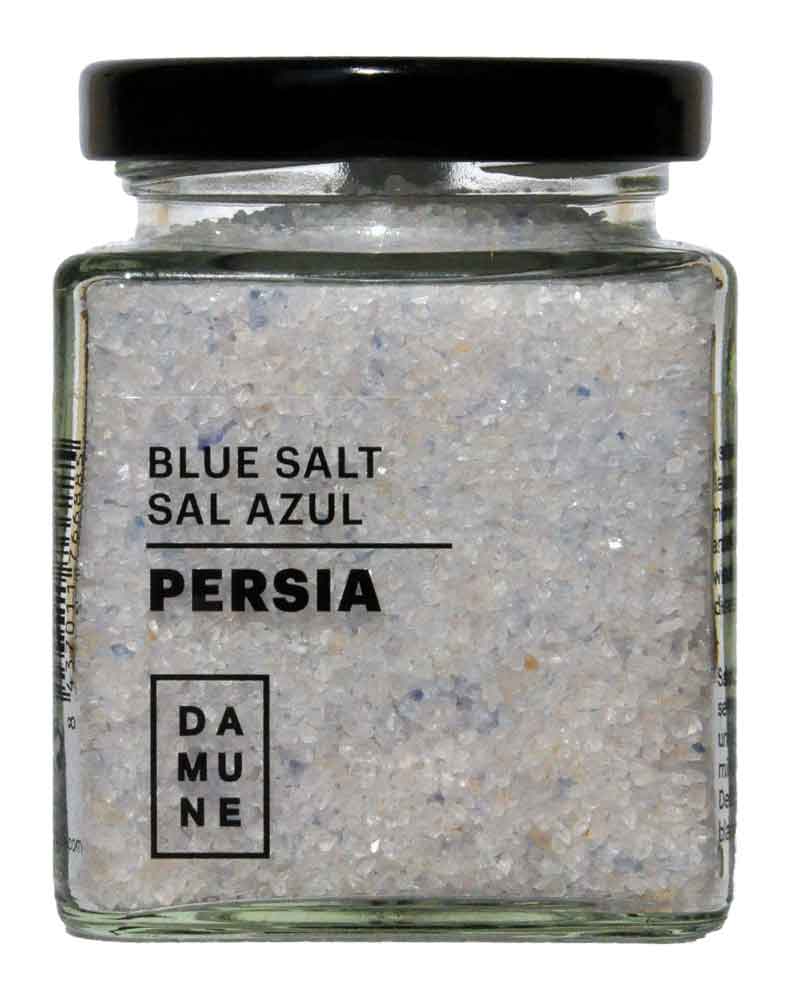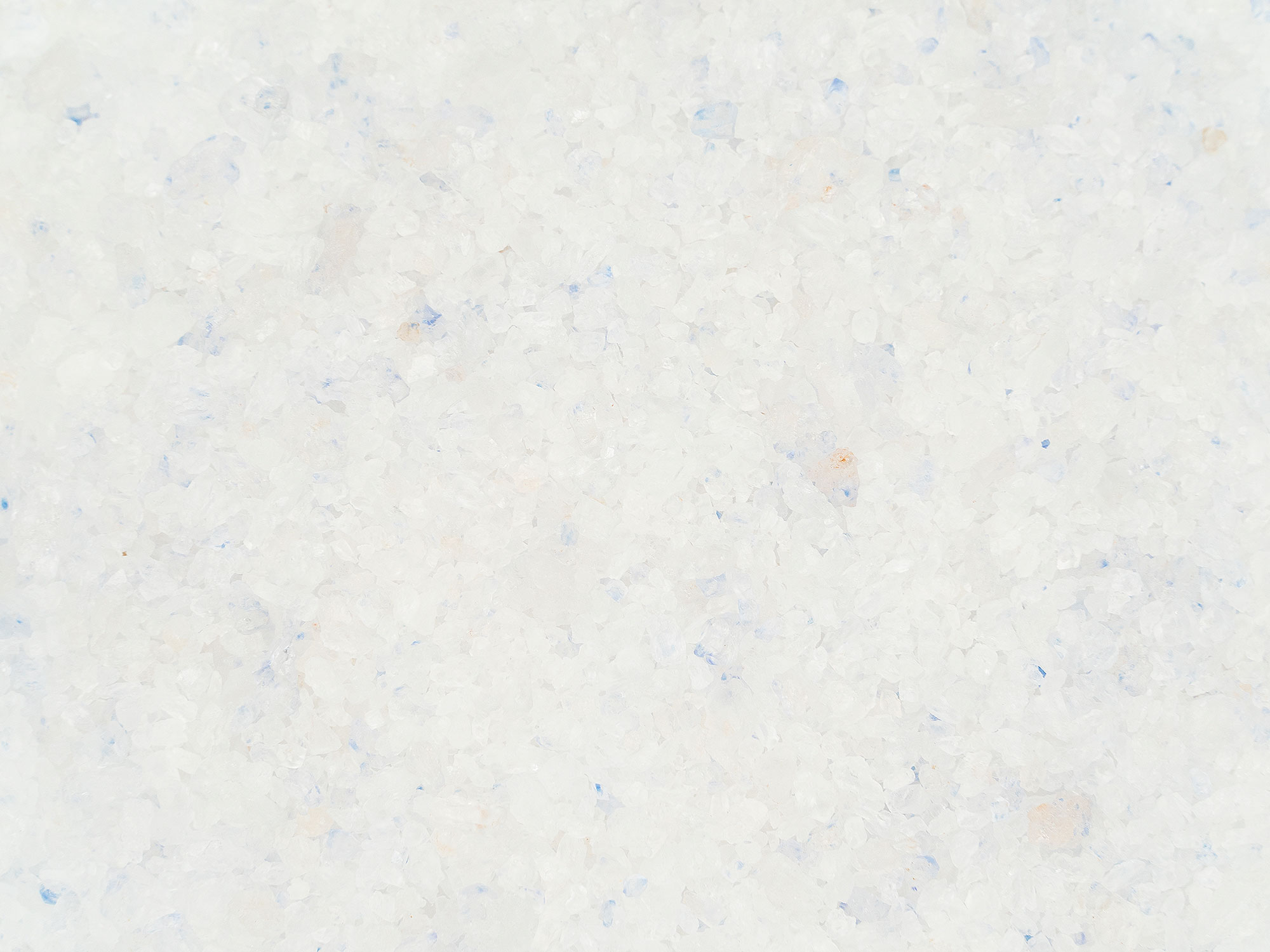Discover The Allure Of Sal Azul: A Deep Dive Into The Blue Salt Sensation
Sal azul, or blue salt, is not just another kitchen ingredient; it's a culinary marvel that's capturing the world's attention. Imagine adding a touch of the ocean to your dishes with a salt that's as vibrant as it is flavorful. This isn't your ordinary table salt; it's a gourmet delight that's turning heads in kitchens around the globe. If you're a food enthusiast or a chef looking to elevate your culinary creations, sal azul might just be the secret weapon you've been searching for.
Now, you might be wondering, what makes blue salt so special? Well, buckle up, because we're about to embark on a journey that will take us from the shores where this magical salt is harvested to your very own kitchen. We'll uncover the mysteries behind its unique color, explore its health benefits, and even share some mouth-watering recipes that will have you reaching for the sal azul every time you cook.
So, whether you're a seasoned chef or a home cook looking to spice things up, this article is your ultimate guide to understanding and utilizing sal azul. Let's dive right in and discover why this blue salt is making waves in the culinary world.
Read also:Alexandria Zahra Jones The Rising Star Whorsquos Turning Heads Worldwide
Table of Contents
- Where Does Sal Azul Come From?
- What Makes Sal Azul Blue?
- Health Benefits of Sal Azul
- How to Use Sal Azul in Your Cooking
- Delicious Recipes Featuring Sal Azul
- Where to Find Sal Azul
- Understanding the Price of Sal Azul
- Sustainability and Ethical Harvesting
- Sal Azul vs Other Salts
- The Future of Sal Azul
Where Does Sal Azul Come From?
Harvesting Locations
Sal azul is primarily harvested from the pristine waters of the Pacific Ocean, specifically off the coasts of Chile and Peru. These regions are known for their crystal-clear waters and unique mineral composition, which contribute to the distinct blue hue of the salt. The harvesting process is a delicate art, requiring skilled workers who understand the nuances of collecting salt without disturbing the natural ecosystem.
Interestingly, the blue color isn't added artificially; it's a result of the natural minerals and algae present in the water. This natural coloring makes sal azul not only a visually appealing ingredient but also a healthier alternative to traditional table salt.
Traditional Methods
The traditional methods of harvesting sal azul involve evaporating seawater in shallow pools, allowing the salt to crystallize naturally. This process can take several weeks, depending on the weather conditions. Once the salt crystals form, they are carefully collected and dried under the sun. This traditional method ensures that the salt retains its natural minerals and flavor, making it a sought-after ingredient for chefs worldwide.
What Makes Sal Azul Blue?
The mesmerizing blue color of sal azul is due to the presence of certain minerals and trace elements found in the seawater where it's harvested. Chief among these is a compound called spirulina, a type of blue-green algae that's rich in nutrients. This algae not only gives the salt its distinctive color but also enhances its nutritional value.
Additionally, the salt contains a variety of other minerals, such as magnesium, potassium, and calcium, which contribute to its unique taste and health benefits. These minerals are naturally present in the seawater and are preserved during the harvesting and drying process, making sal azul a nutrient-rich addition to any diet.
Health Benefits of Sal Azul
Sal azul isn't just about looks; it's also packed with health benefits that make it a smart choice for health-conscious consumers. Here are some of the key benefits:
Read also:Gang Maps The Ultimate Guide To Understanding And Navigating Urban Territories
- Rich in Minerals: As mentioned earlier, sal azul contains a variety of essential minerals that are beneficial for overall health.
- Lower Sodium Content: Compared to regular table salt, sal azul has a lower sodium content, making it a better option for those watching their sodium intake.
- Antioxidant Properties: The presence of spirulina in sal azul gives it antioxidant properties, helping to combat free radicals in the body.
- Improved Digestion: The natural minerals in sal azul can aid in digestion and promote a healthy gut.
How to Use Sal Azul in Your Cooking
Cooking Tips
When it comes to cooking with sal azul, the possibilities are endless. Its unique flavor and vibrant color make it a perfect addition to both savory and sweet dishes. Here are a few tips to get you started:
- Seafood Dishes: Sal azul pairs beautifully with seafood, enhancing the natural flavors of fish and shellfish.
- Soups and Stews: Add a pinch of sal azul to your soups and stews for an extra depth of flavor.
- Deserts: Believe it or not, sal azul can also be used in desserts. A sprinkle on chocolate or caramel can create a delightful contrast of flavors.
Storage Tips
Proper storage is key to preserving the quality of sal azul. Keep it in an airtight container away from direct sunlight and moisture. This will ensure that it retains its color, flavor, and nutritional value for a longer period.
Delicious Recipes Featuring Sal Azul
Ready to try your hand at cooking with sal azul? Here are a couple of recipes to inspire you:
Blue Salt Crusted Salmon
Ingredients:
- 4 salmon fillets
- 1/2 cup sal azul
- 1 lemon, sliced
- Olive oil
Instructions:
- Preheat your oven to 400°F (200°C).
- Coat the salmon fillets with olive oil and press them into the sal azul to create a crust.
- Place the salmon on a baking tray and top each fillet with a slice of lemon.
- Bake for 12-15 minutes, or until the salmon is cooked through.
Sal Azul Caramel Sauce
Ingredients:
- 1 cup granulated sugar
- 1/4 cup water
- 1/2 cup heavy cream
- 1 tsp sal azul
Instructions:
- In a saucepan, heat the sugar and water over medium heat until the sugar dissolves and turns amber in color.
- Slowly add the heavy cream, stirring continuously.
- Remove from heat and stir in the sal azul.
- Let the sauce cool slightly before serving.
Where to Find Sal Azul
Sal azul is becoming increasingly popular, and as a result, it's becoming easier to find. You can purchase it from specialty food stores, online retailers, and even some grocery chains. When buying sal azul, make sure to look for reputable suppliers who can guarantee the authenticity and quality of the product.
Understanding the Price of Sal Azul
As with any gourmet ingredient, the price of sal azul can vary depending on factors such as quality, quantity, and supplier. Generally, you can expect to pay a premium for high-quality sal azul due to its unique harvesting process and health benefits. However, the price is often justified by the superior flavor and nutritional value it offers.
Sustainability and Ethical Harvesting
Sustainability is a crucial consideration when it comes to harvesting sal azul. Many suppliers are committed to ethical practices that ensure the preservation of marine ecosystems. Look for certifications or labels that indicate the salt has been harvested sustainably and ethically.
Sal Azul vs Other Salts
How does sal azul stack up against other types of salt? Here's a quick comparison:
- Table Salt: Sal azul has a lower sodium content and is richer in minerals compared to regular table salt.
- Himalayan Pink Salt: While both are rich in minerals, sal azul offers the added benefit of its unique blue color and flavor.
- Kosher Salt: Sal azul has a finer texture and a more complex flavor profile than kosher salt.
The Future of Sal Azul
As more people become aware of the benefits of sal azul, its popularity is likely to continue growing. With increasing demand, we may see more innovative ways of incorporating this unique salt into our diets. Whether it's in gourmet restaurants or home kitchens, sal azul is here to stay, and its future looks bright.
Conclusion
Sal azul is more than just a salt; it's a culinary experience that offers both flavor and health benefits. From its unique harvesting process to its vibrant color and rich mineral content, sal azul is a gem in the world of gourmet ingredients. So, why not give it a try and see how it can elevate your cooking?
We invite you to share your thoughts and experiences with sal azul in the comments below. Whether you've tried it in a recipe or have questions about its use, we'd love to hear from you. And don't forget to check out our other articles for more culinary inspiration!


